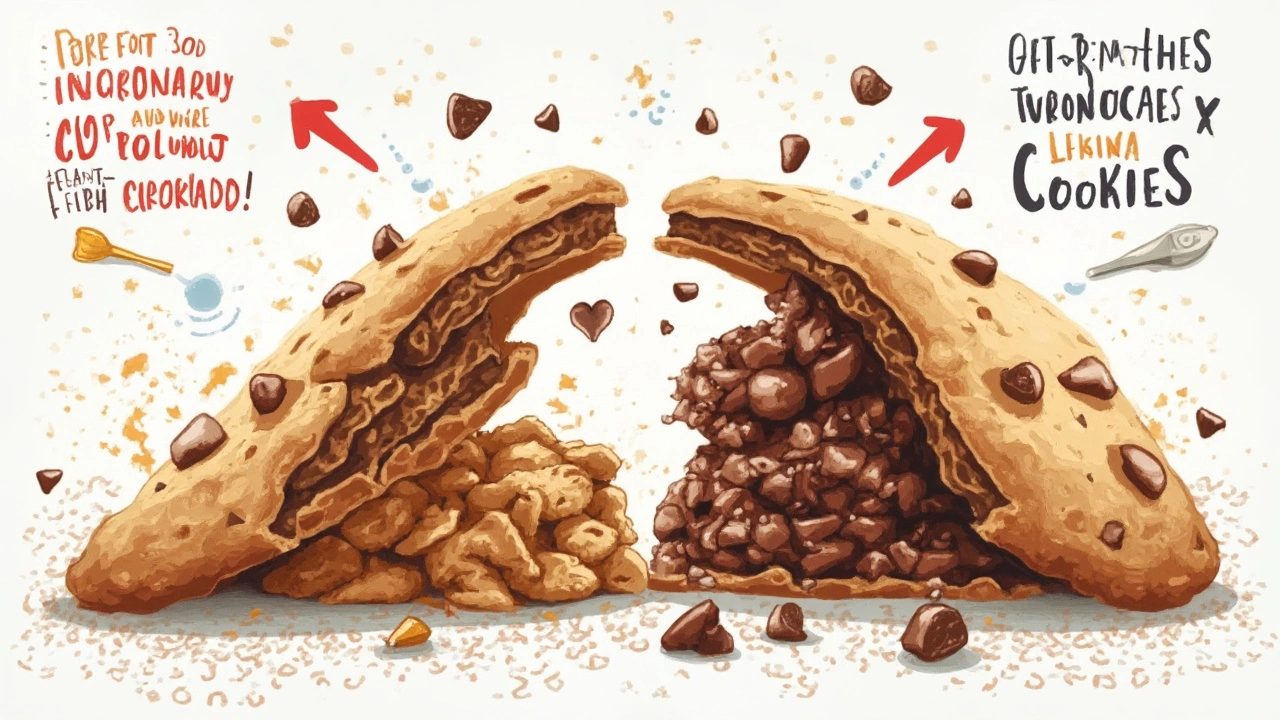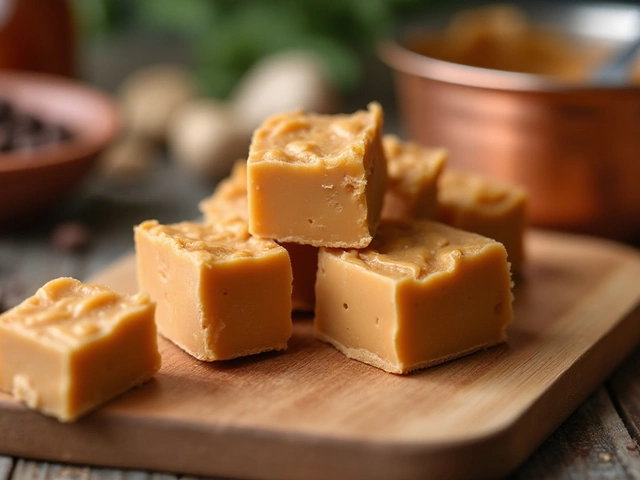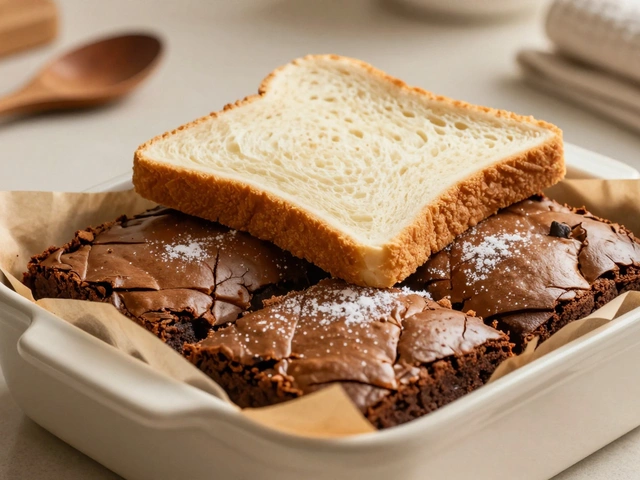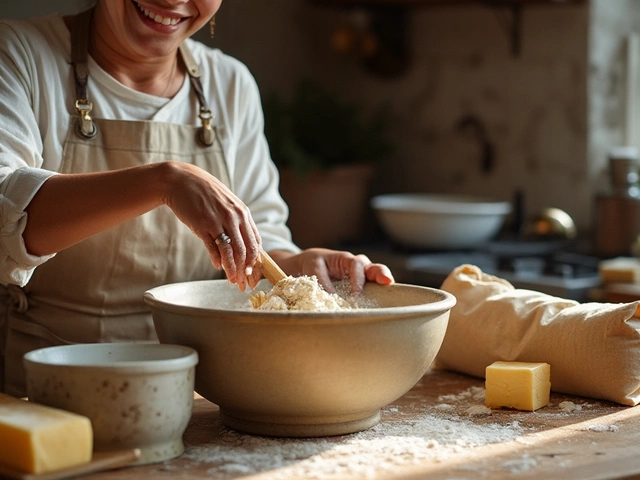
Ever pulled cookies out of the oven, only to bite in and wonder how they turned into crunchy rocks? You’re not alone. Getting that perfect soft bite isn’t about luck—it’s about a couple of kitchen moves that make all the difference.
First, let’s get one thing straight—soft cookies start with more moisture. That means using a higher ratio of brown sugar to white sugar, tossing in an extra egg yolk, or swapping a bit of butter for shortening. Even a few spoonfuls of cornstarch can work like magic for keeping those cookies soft after baking.
Baking time matters just as much. Pull them out of the oven when the edges set but the centers still look a little underdone. They’ll finish cooking on the hot tray, and you’ll get that dream texture.
- What Actually Makes a Cookie Soft?
- Ingredient Swaps for Maximum Chewiness
- Mixing and Baking—Where Most Go Wrong
- Storage Hacks to Keep Cookies Soft
- Troubleshooting: Fixing Tough Cookies
What Actually Makes a Cookie Soft?
The truth is, a soft cookie comes down to science—specifically, moisture and how it’s trapped in your dough. Cookies with more moisture-binder ingredients stay softer longer, while dry cookies just end up crispy. Let’s break down what makes homemade soft cookies work, and why store-bought ones can stay that way for weeks (hint: it’s not just preservatives).
First, brown sugar wins over white sugar. Why? Brown sugar has molasses, which grabs and keeps moisture. That bit of extra water keeps cookies chewy, not crunchy. Baking experts at King Arthur Baking swear by a higher brown sugar ratio to white for soft, thick cookies:
"Brown sugar's moisture gives cookies a softer, chewier texture, while white sugar contributes to crispiness." — King Arthur Baking
The right kind of fat helps, too. Butter brings flavor, but a dash of shortening or even a little cream cheese makes your dough rich and tender. And another trick—using an extra egg yolk. The added fat from the yolk stops cookies from drying out.
Baking time can make or break the softness. If you bake just until the edges are set and the center looks slightly raw, you’re on track. Don’t wait for a golden color all over or you’ll end up with hard cookies. Here’s a quick view of how key factors impact softness:
| Factor | Makes Cookies Soft? | Makes Cookies Hard? |
|---|---|---|
| More brown sugar | Yes | No |
| White sugar | No | Yes |
| Extra egg yolk | Yes | No |
| Overbaking | No | Yes |
| Butter & shortening combo | Yes | No |
Humidity in your kitchen even plays a role. If your air is super dry, your cookies can dry out quicker. Who knew, right?
Mastering soft cookies is about mixing the right stuff, but also about knowing how to read your dough and your oven. A little knowledge goes a long way to that perfect bite.
Ingredient Swaps for Maximum Chewiness
If you want that bakery-style chew in your homemade cookies, your ingredient choices matter more than you think. Seriously—one small swap can turn break-your-teeth cookies into those soft soft cookies everyone’s after.
- Brown Sugar Beats White Sugar: Brown sugar brings extra moisture because it’s mixed with molasses. That moisture holds up after baking, giving you that ultra-soft feel. Lot of professional bakers use a 2:1 ratio of brown to white sugar.
- Cornstarch Is a Secret Weapon: Add about a tablespoon of cornstarch per cup of flour. It softens the flour blend, which keeps your cookies thick and chewy.
- Butter, Shortening, and Egg Yolk Swaps: While all-butter cookies taste great, swapping out part of it for shortening will make your cookies more tender since shortening has a higher melting point. Adding an extra egg yolk (instead of a full egg) packs in more fat, which amps up chewiness.
- Don’t Skip the Vanilla: Two teaspoons instead of one doesn’t just boost flavor—it helps round out the dough so it stays soft after baking.
Here’s a quick comparison of soft versus crunchy cookie blends:
| Ingredient | Soft Cookies | Crunchy Cookies |
|---|---|---|
| Sugar Ratio | More brown than white | More white than brown |
| Fat Type | Butter + some shortening | All butter |
| Eggs | Whole egg + extra yolk | Just whole egg |
| Flour Amount | A little less flour | More flour |
| Cornstarch | Yes | No |
America’s Test Kitchen—basically the mythbusters of baking—points out just how big a difference these swaps make:
“Swapping out white sugar for brown and adding a little cornstarch creates a softer, thicker cookie that stays chewy even after a day or two.”
Try these ingredient changes in your next batch and you’ll be amazed at the difference. Once you figure out your favorite combo, you may never go back to the old way.

Mixing and Baking—Where Most Go Wrong
This is where lots of cookie dreams fall apart. Seriously, one small slip while mixing or baking can send your cookies from chewy to rock-hard before you even know it. Most folks don’t realize the power that little details hold, so here’s what actually matters.
The first rule: don’t overmix your dough. After you add the flour, just stir until you see the flour disappear. Overmixing breaks down those soft air pockets you want and makes cookies tough. If you’re using a stand mixer, keep it on low and only mix just enough—your future self will thank you.
Another thing—get your oven temperature right. Home ovens lie all the time. Use an oven thermometer if you have one. Baking at too high heat can brown the outsides fast and dry out the inside before it ever has a chance to stay moist. Sticking to 325-350°F usually works best for soft cookies.
- If you love that gooey center, pull cookies out when the edges look slightly set but the center is still pale and soft. They firm up as they cool right on the tray.
- Let your dough chill at least an hour before baking. Cold dough spreads less, keeping your cookies thick and soft in the middle.
- Don’t crowd the pan. Give cookies room or they’ll steam and overbake in weird shapes.
Don’t trust the clock—trust your eyes. Even one minute too long in the oven is enough to tip them from soft to crunchy. It sounds fussy, but once you get the hang of these little details, those bakery-level cookie batches become way more regular.
Storage Hacks to Keep Cookies Soft
No joke, the way you store your cookies can make or break their softness. Fresh-baked cookies lose moisture faster than you think—sometimes within a single day. So, locking that moisture in is key if you want to keep your soft cookies tasting bakery-fresh.
The easiest move? Pop your cookies in an airtight container as soon as they’re cooled down. Don’t just leave them out on the counter—they’ll get hard fast. For best results, layer your cookies between sheets of parchment paper. This stops them from sticking together and keeps things tidy.
Got a slice of bread? Toss it right into the container with the cookies. Weird as it sounds, bread shares its moisture with the cookies. The science is simple: cookies suck up the humidity from bread, staying soft for days. White bread is best, since it won’t add its own flavor.
Here’s how some common cookie-storage methods stack up for softness after 48 hours:
| Storage Method | Softness After 48 Hours |
|---|---|
| Airtight container | Still soft |
| In a baggie (zip-top) | Somewhat soft |
| Wrapped in foil | Getting dry |
| Left out on a plate | Hard as a rock |
| Airtight with bread slice | Barely changed |
If you make a giant batch and want to keep cookies soft for weeks, freeze them right after baking and cooling. Just wrap tightly and stash in a freezer bag. When you want a cookie, let it thaw on the counter for twenty minutes or zap it in the microwave for five seconds. Cookies come out soft, not weird or rubbery like people sometimes worry about.
Bottom line: Airtight containers (plus that bread slice trick) are simple but powerful ways to lock in softness. Avoid storing cookies with super dry foods since they’ll just leech out all your cookies’ moisture. Keep them away from air and you’ll keep that chewy, soft bite a lot longer!

Troubleshooting: Fixing Tough Cookies
If your cookies cooled down to bricks instead of soft, chewy happiness, don’t panic—most issues are fixable, or at least preventable next time. Let’s break down what could have gone wrong and how you can turn things around.
The number one reason for tough cookies? Overbaking. Even just a couple minutes too long in the oven will dry up that precious moisture. If you catch it right after baking, throw a slice of white bread into the airtight container with your cookies. The cookies will suck up the bread’s moisture overnight and soften up—not a joke, it actually works. Marshmallows can do the trick too.
Mixing technique plays a bigger role than most people think. If you beat your dough for too long after adding the flour, you’ll develop too much gluten. Gluten makes bread chewy, but it’ll make your cookies dense and hard. Next time, only mix until everything is barely combined—no more.
Sometimes, it’s the ingredient ratios. Using too much white sugar, not enough fat, or skipping the egg yolk can make a cookie dry. Try upping your brown sugar, swapping some butter for shortening, or adding an extra egg yolk. If your cookies are stubbornly tough, you can gently microwave each one for 8-10 seconds right before eating. Instant softness, but don’t overdo it—they can dry out faster afterwards.
Here’s a quick table breaking down common causes and solutions for tough cookies:
| Problem | Why It Happens | How to Fix It |
|---|---|---|
| Too hard/dry after baking | Overbaked, not enough fat, or too much flour | Add bread to container; reduce bake time next round |
| Crumbly, but not chewy | Too much white sugar, not enough brown sugar or egg yolk | Boost brown sugar or add an extra yolk next time |
| Tough texture | Overmixed dough formed too much gluten | Mix less next time—just until combined |
If you want soft cookies every time, the trick is to keep an eye on the bake, stick with brown sugar, don’t overmix, and store them right. Try those tweaks, and you’ll turn even your most stubborn cookies around.





